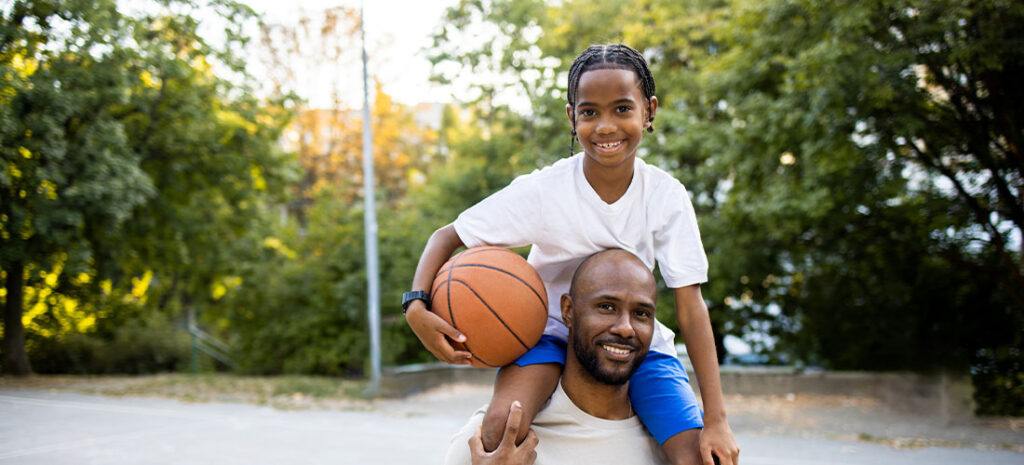For Parents and Guardians –
The Importance of Talking with Kids about Abuse
Prevention Education Series
The goal of this series is to bridge the gap between prevention education theory with on-the-ground practice.

The thought of talking with kids about abuse can be scary and uncomfortable for many adults. It makes sense for us to feel discomfort about engaging in this conversation since very few of us had adults talk with us about this topic when we were kids. Many of us might be survivors of childhood abuse and worry that talking about it will resurface painful memories. But we can’t have meaningful abuse prevention if we don’t push through this discomfort.
One of the first steps in practicing abuse prevention is establishing a culture of communication with the kids in our lives. These conversations help create a sense of safety and confidence for kids.
Fears vs Reality
The fear: We worry that we’ll say the wrong thing. We’re nervous that kids will ask questions we can’t easily answer.
The reality: The same sociocultural dynamics that make adults avoid topics related to sex or sexuality also apply to kids. Kids often feel very uncomfortable talking with adults about their own bodies. They don’t know what to do when something is happening to them that doesn’t feel “right.” This often means that adults miss out on the opportunity for early intervention in abuse because we haven’t created an environment where kids will come to us early and often.
The fear: Many of us struggle to talk openly about sexual abuse given that these conversations inevitably include talking about private body parts.
The reality: We know from research that a strong deterrent to abusers is when children show a clear understanding of their own bodies. Kids knowing and using anatomically correct names for their body parts gives them confidence in talking about and setting boundaries.
The fear: Parents and guardians are scared to alter their child’s sense of trust in the world and other adults in their lives. We may feel unsure about what to say when kids ask questions like, “But why would someone who loves me try to do something like that to me?”
The reality: Rates of abuse are higher than people think and happen most often with people we trust. When we talk openly about abuse, kids know they can come to us early, even if it involves an adult you trust. If you haven’t established a culture of communication, kids are unlikely to push through their own fears and share information about something that is happening with a family member or close friend.
The fear: We’re so overwhelmed by our primary focus as parents and guardians – to make sure no one hurts our children – that we often forget that we have a responsibility to make sure our kids don’t cause harm.
The reality: Our kids are capable of causing harm to others, too. Minors who experience sexual violence are often victimized by another youth, like an acquaintance or an intimate partner. Talking early and often about body sovereignty and boundaries lays a foundation of expectations. As kids grow into teenagers and young adults, they too must honor other people’s boundaries.
The fear: Ending abuse in sport feels daunting. As adults who care so much about the safety of the kids in our lives, we may feel overwhelmed about how to have any control over making change.
The reality: Research shows that meaningful change happens in small, intentional steps that promote transparency and open dialogue. So, while it may seem insignificant in the grand scope of things to have small conversations with kids, doing so demonstrates that we find value in these conversations and that we aren’t afraid of talking about hard things. These seemingly small steps are critical in our attempts to shift the needle of change in our own communities.
Talking Tips
There are many reasons abuse survivors don’t speak up sooner. They don’t know how to bring up such a difficult topic, they think they did something wrong, or they don’t know how to tell their parents that someone they love hurt them. Here are a few tips and suggested prompts for engaging in these conversations with kids.
Rather than thinking of this as a singular BIG conversation, approach it as a commitment to smaller micro conversations over the course of time.
Don’t say: “I need to talk to you about something very, very serious.”
Instead try: “I hope you know that you can always come to me and talk about anything, even if it seems scary. For example, if someone ever said or did anything that made you feel uncomfortable, you can always come to me. Even if that person is someone else we love.”
Try to avoid statements that may seem protective but can actually deter disclosures.
Don’t say: “If anyone ever hurt you, I would kill them.”
Instead try: “If anyone ever did something that made you uncomfortable, we would work together to figure out what to do.”
Use current events as a way to initiate conversation with teenagers.
Don’t say: “I saw in the news that a coach abused their athletes. That makes me so mad!!”
Instead try: “I saw in the news a story about how a coach hurt their athletes. I know that when this happens it can be really hard for kids to talk to adults, so I just wanted you to know that you can always come to me.”
The truth is we can’t guarantee our kids will always be safe from harm. As long as they have people in their lives who they trust, they will remain susceptible to abuse because abusers take advantage of that trust. The solution isn’t then to teach our kids to never trust anyone. Rather, it’s to teach them that WE are a safe place. That they can trust us to handle their questions and concerns with confidence and patience.

Monica Rivera
VP of Prevention Education at the U.S. Center for SafeSport
Monica has spent the last 17 years in the field of interpersonal violence prevention, much of that time working directly with survivors of abuse. She leads our team of subject matter experts who share a belief in the transformative power of prevention education.
Do you have any questions or ideas? Please reach out to [email protected].
Featured Resource
The prevention tools the Center will be sharing in this quarterly series are data-informed and current.
Learn about athlete safety and best practices for parenting kids in sport. We created this Handbook for parents and guardians to help make sport safer for the kids in their lives.
JOIN OUR EMAIL LIST
Stay connected with the latest news, resources, and tools. Enjoy our quarterly e-newsletter, The Gameplan.
